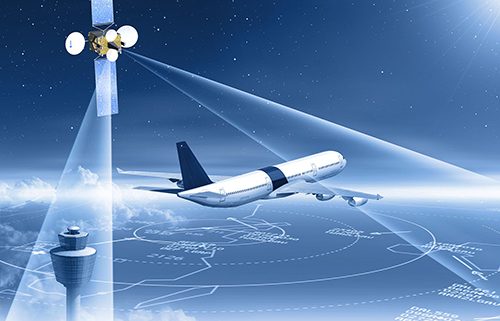NLR recently successfully completed the first flight trials using satellites for air-ground communication. This enables air traffic controllers to monitor an in-flight aircraft more effectively and thus increase the efficiency of air traffic management. The flight trials were carried out using NLR’s Citation research aircraft following a contract awarded by the European Space Agency (ESA) and satellite operator Inmarsat. The Netherlands is co-funding ESA’s Iris programme.
The trials form part of ESA’s Iris Precursor programme. The objective is to have developed in 2019 an Iris prototype that enables on-board air-ground satellite communication. Communication of this kind will be necessary to allow 4D navigation in due course. This will include exchanging with air traffic control information such as the aircraft’s position, altitude and time. Air traffic controllers will thus be able to determine very accurately where an aircraft is and what time it will arrive.
The downstream technology was tested extensively during four Citation flights to different European destinations. The system’s performance was also tried out beyond the polar circle, where satellites have a lower position relative to the horizon. The system was found to work excellently, even when switching between satellite beams. Using satellite beams means that the frequency on which information is sent and received is coupled to the aircraft’s geographical position. The frequency changes when an aircraft flies into a different satellite beam. New flight trials are expected to be carried out at the end of this year so as to validate the Iris technology with real aircraft systems instead of test PCs.
Civil aviation will continue growing in the coming decades, creating a great need for enhanced communication technology. Satellite communication makes it possible to use airspace optimally and prevent it from becoming choked by congestion. The Iris project is closely related to the SESAR project focused on modernising European Air Traffic Management (ATM). Satellite communication is also a modern alternative to the crammed ‘traditional’ air-ground communication using radio frequencies. It enables air-ground communication in areas where there are no ground stations, such as remote regions or above the oceans.



